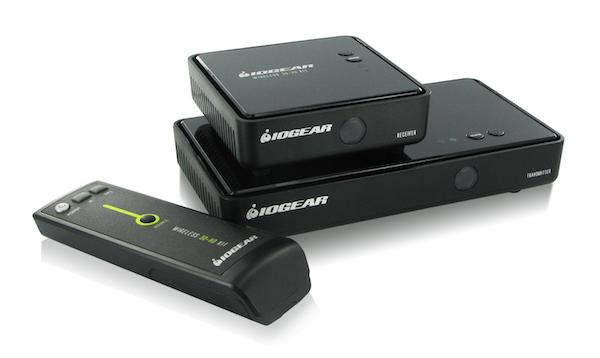Why not replace the broken connector? Repair tools exist for all other cable types, so why would HDMI not have one?
What’s Up With Wireless HDMI?

Q The connector on my in-wall HDMI cable broke off, and I have no way to replace it other than ripping into the wall. As a result, I’m wondering if the wireless HDMI products on the market are a noticeable downgrade from wired HDMI? —R.A. Oleson
A That depends on your expectations. Wireless HDMI transmitter kits priced under $200 that are capable of transmitting 1080p video and multichannel audio are sold by companies like Iogear, Monoprice, and Gefen. These consist of a wireless transmitter that connects to your AV source output and a wireless receiver that connects to your video display’s HDMI input. Transmission range for most kits is around 100 feet, and some are capable of beaming signals through walls to a receiver in an adjacent room with no signal loss or reduction in video quality.
If you want to transmit 4K/60 video signals with wide color gamut and high dynamic range, however, you’ll find the available wireless HDMI options to be lacking. One contender could be Iogear’s forthcoming GW4KHDKIT60 Wireless HDMI 4K Video Extender Kit ($599), which the company displayed at CES 2018 and plans to ship starting in March. Iogear claims 3840 x 2160 @60Hz signal compatibility for the GW4KHDKIT60, along with a 600-foot transmission distance (line-of-sight). Like other wireless HDMI kits, it can remotely control sources using IR pass-through.
If $599 is more than you hoped to spend on a wireless HDMI kit, you might also consider running a long in-room HDMI cable. Companies like Fibbr use fiber optic cables to make their HDMI interconnects. For this reason, the cables are thinner and more flexible than regular HDMI interconnects, and they can be manufactured with longer cable lengths — up to 65 feet with no external power required. If you visit the company’s website, you can also check out its Brand Propaganda Film. The clip has absolutely nothing to do with HDMI technology, but it’s refreshing to see marketing called out for what it really is.
- Log in or register to post comments


I have a 52 inch Sony in my bedroom. I have tried 3 different lengths of HDMI from my hub in the basement (of the whole house system) and the room. All are about 10 meters long, all tend to work for a little while, then degrade to unwatchable. Boosters made little difference, at least for long. Finally spent like 180 bucks and got a wireless for that TV. Actiontec, I think. Simple to install, took about 30 seconds to conect, then a perfect picture every time. Sometimes it loses signal if I haven't used it for a week or so, but a simple unplug/replug to the power and 30 seconds later, back in business. I would recommend this. I wish I had done this 10 years ago. I really hate HDMI, love the one plug aspect, hate the troublesome handshake. I wish Hollywood would grow up about piracy and let honest consumers enjoy their movies and equipment.

...you could use Monoprice's HDMI over Ethernet extender. (Product # 14158)

There's not many specifics (any) about the existing HDMI cable here. How long is it? Is it fastened to studs inside the wall? Can you get at it from attic or crawl space? If its loose in the wall/attic, all you have to do is disconnect it from both ends (wallplates), use electrical tape to connect new one to existing and pull new one thru and reconnect at both end. Not really that hard and less expensive and more reliable than wireless HDMI.

Wireless HDMI is revolutionizing home entertainment and professional setups by eliminating messy cables and offering seamless high-definition video transmission. It allows users to stream 4K and Full HD content from one device to another without lag, making it perfect for gaming, presentations, and home theaters. While it provides convenience and flexibility, factors like latency, signal interference, and range limitations should be considered before purchasing. Just as Wireless HDMI simplifies connectivity, tools like the Age Calculator (https://countingtools.com/age-calculator/) make it effortless to determine your exact age with accuracy and ease!























































